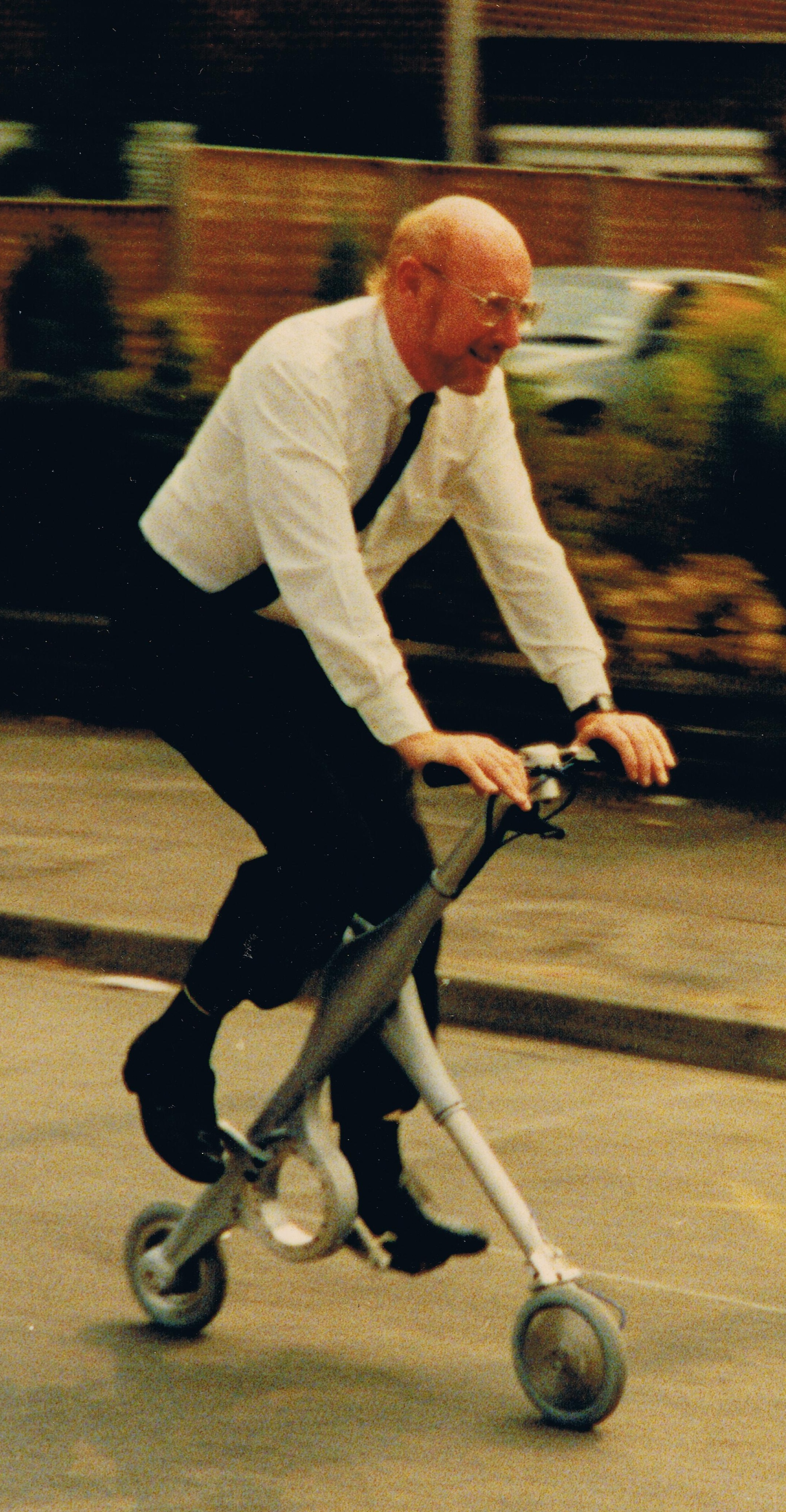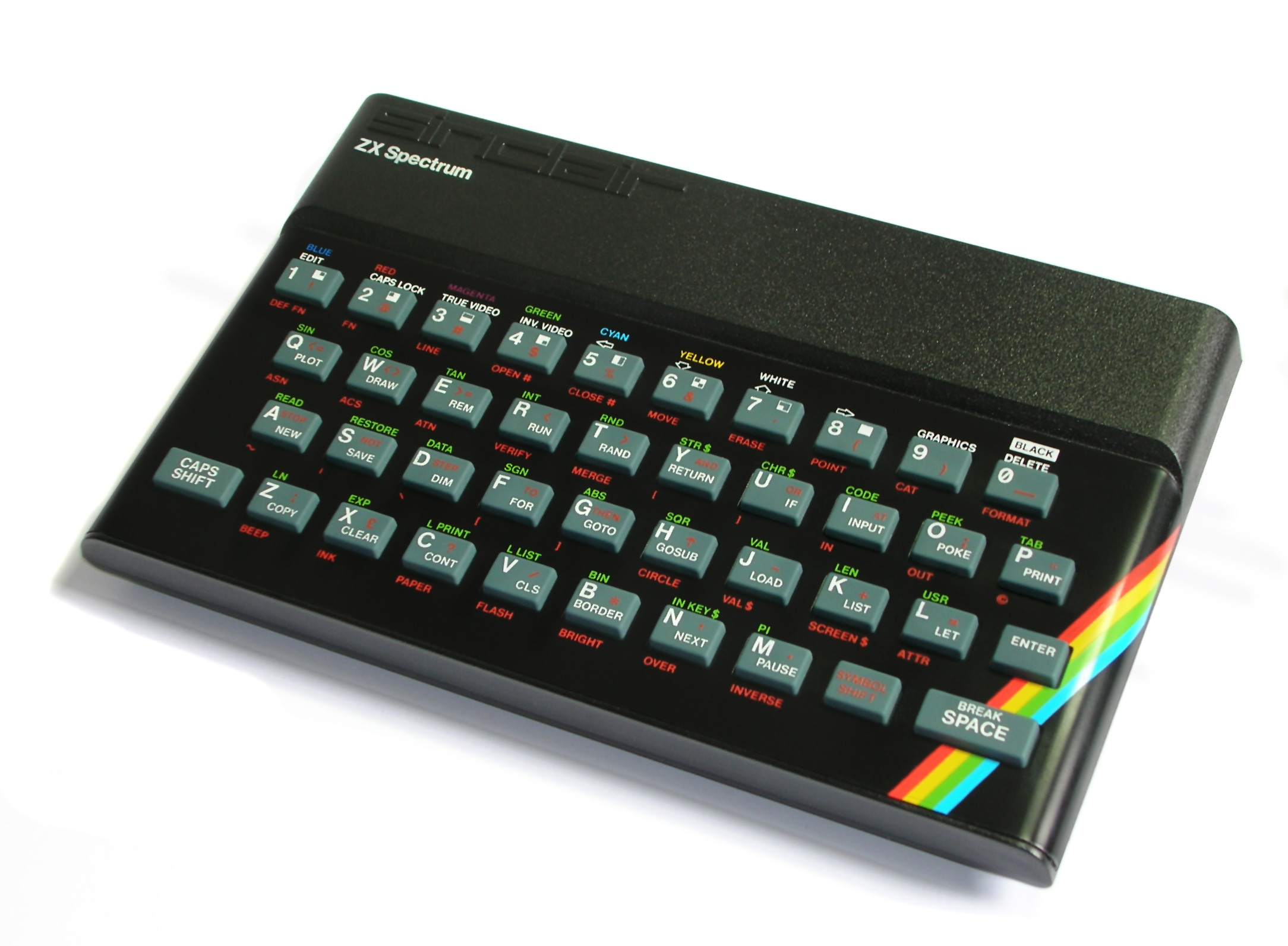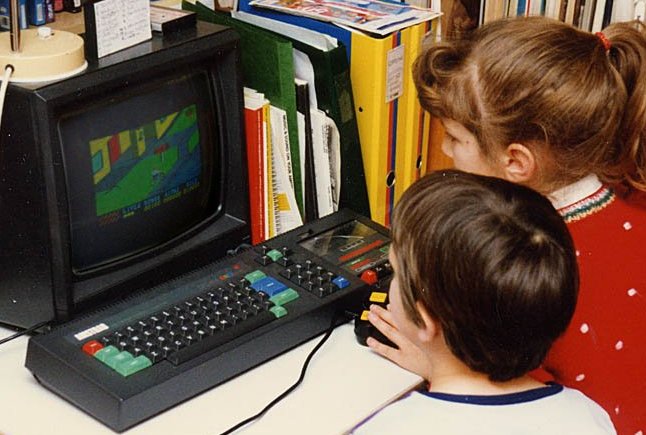|
ZX81
The ZX81 is a home computer that was produced by Sinclair Research and manufactured in Dundee, Scotland, by Timex Corporation. It was launched in the United Kingdom in March 1981 as the successor to Sinclair's ZX80 and designed to be a low-cost introduction to home computing for the general public. It was hugely successful; more than 1.5 million units were sold. In the United States it was initially sold as the ZX-81 under licence by Timex. Timex later produced its own versions of the ZX81: the Timex Sinclair 1000 and Timex Sinclair 1500. Unauthorized ZX81 clones were produced in several countries. The ZX81 was designed to be small, simple, and above all, inexpensive, with as few components as possible. Video output was designed for a television set rather than a dedicated monitor. Programs and data are loaded and saved onto compact audio cassettes. It uses only four silicon chips and 1 KB of memory. It has no power switch or moving parts, with the exception ... [...More Info...] [...Related Items...] OR: [Wikipedia] [Google] [Baidu] |
ZX Spectrum
The ZX Spectrum () is an 8-bit computing, 8-bit home computer developed and marketed by Sinclair Research. One of the most influential computers ever made and one of the all-time bestselling British computers, over five million units were sold. It was released in the United Kingdom on 23 April 1982, and around the world in the following years, most notably in Europe and the United States. The machine was designed by English entrepreneur and inventor Sir Clive Sinclair and his small team in Cambridge, and was manufactured in Dundee, Scotland by Timex Corporation. It was made to be small, simple, and most importantly inexpensive, with as few components as possible. The addendum "Spectrum" was chosen to highlight the machine's colour display, which differed from the black-and-white display of its predecessor, the ZX81. Rick Dickinson designed its distinctive case, rainbow motif, and chiclet keyboard, rubber keyboard. Video output is transmitted to a television set rather than a ded ... [...More Info...] [...Related Items...] OR: [Wikipedia] [Google] [Baidu] |
List Of ZX80 And ZX81 Clones
The following is a list of clones of Sinclair Research's ZX80 and ZX81 home computer Home computers were a class of microcomputers that entered the market in 1977 and became common during the 1980s. They were marketed to consumers as affordable and accessible computers that, for the first time, were intended for the use of a s ...s: ZX80 * MicroAce (1980, US) * Microdigital TK80 (1981, Brazil) * Microdigital TK82 (1981, Brazil) * Nova Electrônica/ Prológica NE-Z80 (1981, Brazil) ZX81 Official clones * Timex Sinclair T/S 1000 (a ZX81 with the same circuit board from the same factory, but with a 2K x 8 RAM chip instead of 1K. This is typically a U.S. model, with a VHF NTSC RF modulator and slightly improved RF shielding, but are the same BASIC machine) * Timex Sinclair T/S 1500 (a ZX81 in a ZX Spectrum like case) * Lambda Electronics Lambda 8300 (a 1983 clone, also branded as PC 8300, DEF 3000, Basic 2000, Marathon 32K, Tonel PC, Unisonic Futura 8300, PC-81 Pe ... [...More Info...] [...Related Items...] OR: [Wikipedia] [Google] [Baidu] |
Sinclair BASIC
Sinclair BASIC is a dialect of the programming language BASIC used in the 8-bit home computers from Sinclair Research, Timex Sinclair and Amstrad. The Sinclair BASIC interpreter was written by Nine Tiles Networks Ltd. Designed to run in only 1 KB of RAM, the system makes a number of decisions to lower memory usage. This led to one of Sinclair BASIC's most notable features, that the keywords were entered using single keystrokes; each of the possible keywords was mapped to a key on the keyboard, when pressed, the token would be placed into memory while the entire keyword was printed out on-screen. This made code entry easier whilst simplifying the parser. The original ZX80 version supported only integer mathematics, which partially made up for some of the memory-saving design notes which had negative impact on performance. When the system was ported to the ZX81 in 1981, a full floating point implementation was added. This version was very slow, among the slowest BASICs ... [...More Info...] [...Related Items...] OR: [Wikipedia] [Google] [Baidu] |
ZX80
The Sinclair ZX80 is a home computer launched on 29 January 1980 by Science of Cambridge Ltd. (later to be better known as Sinclair Research). It is notable for being one of the first computers available in the United Kingdom for less than a hundred pounds. It was available in kit form for £79.95, where purchasers had to assemble and solder it together, and as a ready-built version at £99.95. The ZX80 was advertised as the first personal computer for under £100 and received praise for its value and documentation. However, it faced criticism for screen blanking during program execution, small RAM size, and the keyboard design. It was very popular straight away, and for some time there was a waiting list of several months for either version of the machine. Name The ZX80 was named after the Z80 processor with the 'X' meaning "the mystery ingredient". Hardware Internally, the machine was designed by Jim Westwood around a Z80 central processing unit with a clock speed ... [...More Info...] [...Related Items...] OR: [Wikipedia] [Google] [Baidu] |
Timex Sinclair 1500
The Timex Sinclair 1000 (or T/S 1000) was the first computer produced by Timex Sinclair, a joint venture between Timex Corporation and Sinclair Research. It was launched in July 1982, with a US sales price of US$99.95, making it the cheapest home computer at the time; it was advertised as "the first computer under $100". The computer was aimed at regular home users. As purchased, the T/S 1000 was fully assembled and ready to be plugged into home televisions, which served as a video monitor. The T/S 1000 was a slightly modified version of the Sinclair ZX81 with an NTSC RF modulator, for use with North American TVs, instead of PAL for European TVs. The T/S 1000 doubled the onboard RAM from 1 KB to 2 KB; further expandable by 16 KB through the cartridge port. The T/S 1000's casing had slightly more internal shielding but remained the same as Sinclair's, including the membrane keyboard, which had modified nomenclature to suit American tastes (e.g. "DELETE" instead of "RUBO ... [...More Info...] [...Related Items...] OR: [Wikipedia] [Google] [Baidu] |
Sinclair Research
Sinclair Research Ltd is a British consumer electronics company founded by Clive Sinclair in Cambridge in the 1970s. In 1980, the company entered the home computer market with the ZX80 at £99.95, at that time the cheapest personal computer for sale in the United Kingdom. A year later, the ZX81 became available through retailers, introducing home computing to a generation, with more that 1.5 million sold. In 1982 the ZX Spectrum was released, becoming the UK's best selling computer, and competing aggressively against Commodore and Amstrad. A combination of the failures of the Sinclair QL computer and the TV80 pocket television led to financial difficulties in 1985, and a year later Sinclair sold the rights to its computer products and brand name to Amstrad. Sinclair Research Ltd continued to exist as a one-man company, marketing Clive Sinclair's inventions. History Founding and early years On 25 July 1961, Clive Sinclair founded his first company, Sinclair Radi ... [...More Info...] [...Related Items...] OR: [Wikipedia] [Google] [Baidu] |
Rick Dickinson
Rick Dickinson (11 August 1955 – 24 April 2018) was a British industrial designer who developed pioneering computer designs in the 1980s. Notable examples of his design work include the ZX81 case and touch-sensitive keyboard and the ZX Spectrum's rubber keyboard. Early life Dickinson graduated from Newcastle Polytechnic in 1979 with a First Class Bachelor of Arts honours degree in Design for Industry. The "Design for Industry" degree was the first of its kind, formerly a three-year "Industrial Design" degree. The new course, with two additional terms for industrial placements, extended the degree to four years and popularised the term "sandwich course". Sinclair Dickinson joined Sir Clive Sinclair's Sinclair Research Ltd in December 1979, replacing John Pemberton who was leaving Sinclair to head up a new design centre for ITT in Harlow. Sinclair Research offices were at 6 Kings Parade, Cambridge. Dickinson was the in-house industrial designer of Sinclair Research Ltd. H ... [...More Info...] [...Related Items...] OR: [Wikipedia] [Google] [Baidu] |
Clive Sinclair
Sir Clive Marles Sinclair (30 July 1940 – 16 September 2021) was an English entrepreneur and inventor, best known for being a pioneer in the computing industry and also as the founder of several companies that developed consumer electronics in the 1970s and early 1980s. After spending several years as assistant editor of ''Instrument Practice'', Sinclair founded Sinclair Radionics Ltd in 1961. He produced the world's first slimline electronic pocket calculator (the Sinclair Executive) in 1972. Sinclair then moved into the production of home computers in 1980 with Sinclair Research Ltd, producing the Sinclair ZX80 (the UK's first mass-market home computer for less than £100) and in the early 1980s, the ZX81, ZX Spectrum and the Sinclair QL. Sinclair Research is widely recognised for its importance in the early days of the British and European home computer industry, as well as helping to give rise to the British video game industry. Sinclair also had several commercial ... [...More Info...] [...Related Items...] OR: [Wikipedia] [Google] [Baidu] |
Z80A
The Zilog Z80 is an 8-bit microprocessor designed by Zilog that played an important role in the evolution of early personal computing. Launched in 1976, it was designed to be software-compatible with the Intel 8080, offering a compelling alternative due to its better integration and increased performance. Along with the 8080's seven registers and flags register, the Z80 introduced an alternate register set, two 16-bit index registers, and additional instructions, including bit manipulation and block copy/search. Originally intended for use in embedded systems like the 8080, the Z80's combination of compatibility, affordability, and superior performance led to widespread adoption in video game systems and home computers throughout the late 1970s and early 1980s, helping to fuel the personal computing revolution. The Z80 was used in iconic products such as the Osborne 1, Radio Shack TRS-80, ColecoVision, ZX Spectrum, Sega's Master System and the ''Pac-Man'' arcade cabinet. In t ... [...More Info...] [...Related Items...] OR: [Wikipedia] [Google] [Baidu] |
Home Computer
Home computers were a class of microcomputers that entered the market in 1977 and became common during the 1980s. They were marketed to consumers as affordable and accessible computers that, for the first time, were intended for the use of a single, non-technical user. These computers were a distinct market segment that typically cost much less than business, scientific, or engineering-oriented computers of the time, such as those running CP/M or the IBM PC, and were generally less powerful in terms of computer memory, memory and expandability. However, a home computer often had better video display controller, graphics and sound than contemporary business computers. Their most common uses were word processing, playing video games, and computer programming, programming. Home computers were usually sold already manufactured in stylish metal or plastic enclosures. However, some home computers also came as commercial electronic kits, like the ZX80, Sinclair ZX80, which were both h ... [...More Info...] [...Related Items...] OR: [Wikipedia] [Google] [Baidu] |






